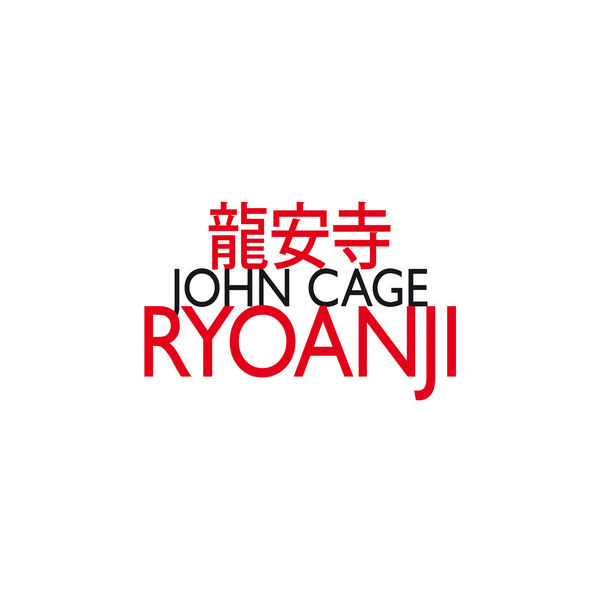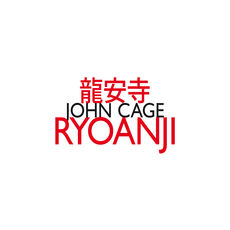
Streaming ilimitado
Escuche este álbum ahora en alta calidad en nuestras apps
Comenzar mi periodo de prueba gratis y escuchar este álbumDisfrute de este álbum en las apps Qobuz con sususcripción
SuscribirDisfrute de este álbum en las apps Qobuz con sususcripción
An hour in length with an ensemble of seven performing it, John Cage's Ryoanji is among his most focused and beautiful works. Based on a transformative experience after viewing an ancient rock garden in a Japanese Zen Buddhist monastery of the same name. It appears the garden had within its enclosure a space for 15 stones arranged in patterns of two twos, two threes, and a five. The stones were upon raked sand, and were apparently not specifically arranged except to be in a harmony of asymmetrical imposition upon one another. It was written originally for solo instruments, and then for an unspecified number of players who could use any instrumentation they wished; then there was a version for 20 percussionists. This is the most balanced, revised for bass, flute, trombone, oboe, the human voice, and percussion. Eberhard Blum and Jan Williams lead a performance ensemble. The symbolic goal of the performers is to create the "perfect asymmetry of the garden." The graphic materials the musicians work with are short, and long lines traced from 15 stones; they then have to outline a glissandi within each given pitch range. Where multiple lines intersect, tape recordings of that same instrument may be used -- they are employed here in one segment near the end of the piece. Cage's instructions are that the glissandi need to be played smoothly "like a brushstroke" to resemble sound events in nature rather than in music. No dynamics are assigned, though the work should be played softly -- according to Cage there are exceptions to rules and sometimes, even in a work as meditative as this, the need to break them. From here, the musicians follow Cage's indeterminate path -- all except for the percussion. This is precisely notated to begin two measures before each instrumentalist enters, continues during their silences, and is played two measures after everyone is finished in the score. Percussion, too, should be played quietly, but "imperceptibly" in the foreground, "as if light is shining on them." What actually transpires in Ryoanji is quite remarkable. With the percussion notated in uneven increments and not a constant pulse, we are aware of the passage of time via sense impression, not accuracy. As each instrument defines its shape, we realize in listening we are in a pure yet thoroughly unpredictable space, dynamics shift and sway, slightly changing colors and sonances. There is no feeling of imbalance in this seemingly ever-changing work, where everything appears to remain the same. It's a meditation work on how things can impose on one another without one overpowering the other. As a result the piece is defined as much by what you don't hear as what you do.
© TiVo
Está escuchando muestras.
Escuche más de 100 millones de pistas con un plan de streaming ilimitado.
Escuche esta playlist y más de 100 millones de pistas con nuestros planes de streaming ilimitado.
Desde $ 16.190,00/mes

John Cage, Composer, MainArtist
(C) 2011 Hat Hut Records Ltd. (P) 2011 Hat Hut Records Ltd.
Presentación del Álbum
An hour in length with an ensemble of seven performing it, John Cage's Ryoanji is among his most focused and beautiful works. Based on a transformative experience after viewing an ancient rock garden in a Japanese Zen Buddhist monastery of the same name. It appears the garden had within its enclosure a space for 15 stones arranged in patterns of two twos, two threes, and a five. The stones were upon raked sand, and were apparently not specifically arranged except to be in a harmony of asymmetrical imposition upon one another. It was written originally for solo instruments, and then for an unspecified number of players who could use any instrumentation they wished; then there was a version for 20 percussionists. This is the most balanced, revised for bass, flute, trombone, oboe, the human voice, and percussion. Eberhard Blum and Jan Williams lead a performance ensemble. The symbolic goal of the performers is to create the "perfect asymmetry of the garden." The graphic materials the musicians work with are short, and long lines traced from 15 stones; they then have to outline a glissandi within each given pitch range. Where multiple lines intersect, tape recordings of that same instrument may be used -- they are employed here in one segment near the end of the piece. Cage's instructions are that the glissandi need to be played smoothly "like a brushstroke" to resemble sound events in nature rather than in music. No dynamics are assigned, though the work should be played softly -- according to Cage there are exceptions to rules and sometimes, even in a work as meditative as this, the need to break them. From here, the musicians follow Cage's indeterminate path -- all except for the percussion. This is precisely notated to begin two measures before each instrumentalist enters, continues during their silences, and is played two measures after everyone is finished in the score. Percussion, too, should be played quietly, but "imperceptibly" in the foreground, "as if light is shining on them." What actually transpires in Ryoanji is quite remarkable. With the percussion notated in uneven increments and not a constant pulse, we are aware of the passage of time via sense impression, not accuracy. As each instrument defines its shape, we realize in listening we are in a pure yet thoroughly unpredictable space, dynamics shift and sway, slightly changing colors and sonances. There is no feeling of imbalance in this seemingly ever-changing work, where everything appears to remain the same. It's a meditation work on how things can impose on one another without one overpowering the other. As a result the piece is defined as much by what you don't hear as what you do.
© TiVo
Acerca del álbum
- 1 disco(s) - 1 pista(s)
- Duración total: 01:00:28
- Artistas principales: John Cage
- Compositor: John Cage
- Sello: hat[now]ART
- Género Clásica
(C) 2011 Hat Hut Records Ltd. (P) 2011 Hat Hut Records Ltd.
Mejorar la información del álbum
